21 Italian Desserts You Should Try At Least Once

Italy, the land of endless variations of pizza and pasta, is perhaps not widely known or renowned for its desserts. After all, its neighbor France steals all the European thunder when it comes to delicate, elegant pastries. There are, of course, certain popular Italian staples like cannoli and tiramisu that are international darlings and widely made, sold, and ordered across bakeries and restaurants in the United States. And while both desserts are delicious in their own right, the country boasts endless variations of underrated cookies, cakes, chocolate confections, tarts, and ice cream mousse that could fulfill even the most diehard sweet tooth's sugary desires. Many are regional, holiday specific, gluten-free, vegan, and packed with a boozy punch to satisfy every preference under the sun.
On your next trip to Italy, don't forget to save some room for dessert after your meal — you may just end up falling in love with something new. Here are 21 underrated Italian desserts you should try at least once.
Read more: 30 Types Of Cake, Explained
Crostata
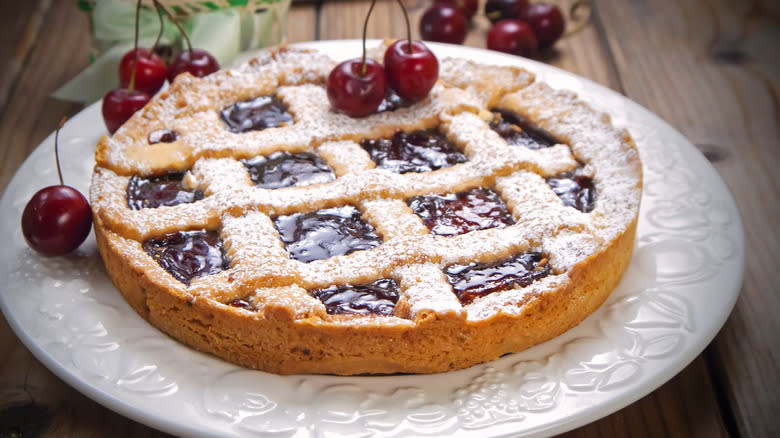
A staple of an Italian childhood, crostata is a thinly baked circular tart with a lattice top that can be made with any kind of jam or the ever-popular Nutella. Apricot, peach, and raspberry are traditional fillings, but the rustic dessert can be packed with more unique flavors such as fig and amarene, which is made with sour cherries. Lemon and orange shavings are sometimes added to the dough for extra zest. The dessert is typically sprinkled with a fine dusting of powdered sugar for an extra touch of sweetness.
The first alleged reference to the treat can be found in Martino da Como's cookbook Libro de Arte Coquinaria, published sometime in the mid-15th century. In this book, the crostata is not sweet but savory with instructions on filling it with the meat of pippioni (young pigeons) or pollastri (young hens).
Millefoglie
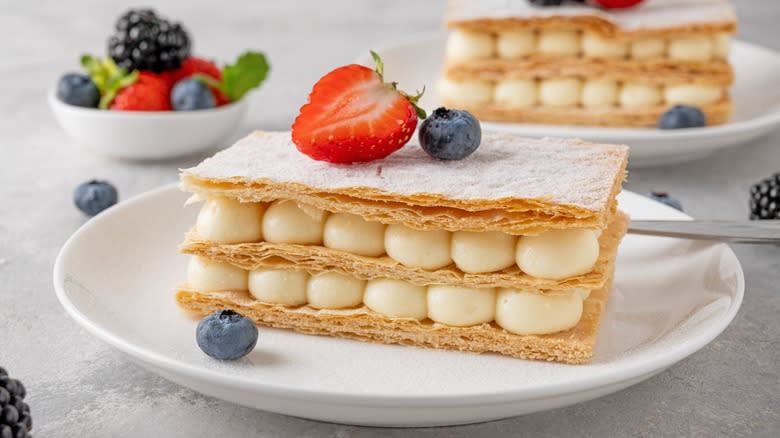
Translating to "a thousand leaves" or " a thousand layers," millefoglie is a cake made with fluffy vanilla custard sandwiched between multiple layers of thin and flaky puff pastry. It's an extremely delicate and elegant dessert that is best balanced with a strong shot of espresso or a more concentrated shot made using less water, called ristretto.
It is descended from the French pastry mille-feuille, which first officially burst onto the dessert scene in a 1651 cookbook written by François Pierre de la Varenne, and over the generations has been widely adopted across Italy. Italians also make a savory version of the millefoglie with spinach, cheese, and pesto. Many ingredients pair well with the flakiness of the puff pastry.
Ciambelle Al Vino
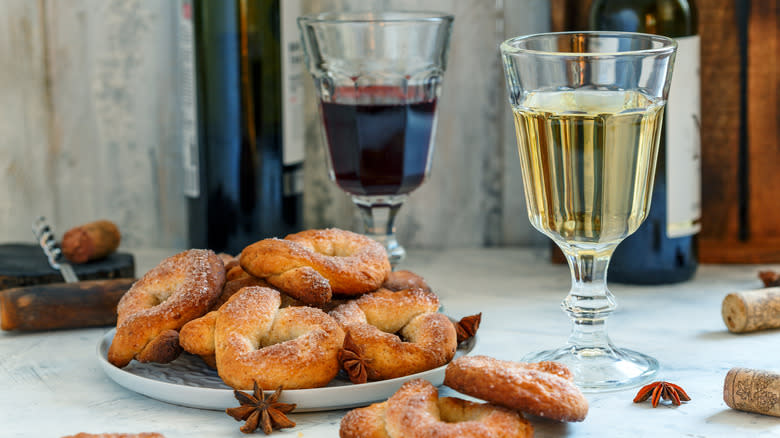
If you ever have any leftover wine after a dinner party, make ciambelle al vino. These "wine donuts" are circular, crunchy, and not-too-sweet cookies made with white or red wine and very few ingredients. They feature on many Italian restaurant menus in the region of Lazio and are usually accompanied by a shot of Italian Passito, a sweet dessert wine made from raisins, to dunk them in and wash them down.
These rustic cookies are only made with sugar, olive oil, wine, flour, and a pinch of aniseed for flavor, so they're naturally vegan. They're descended from the Castelli Romani, a series of ancient wine-making hills located just outside of Rome, where they were originally made for and consumed during festivals.
Panna Cotta
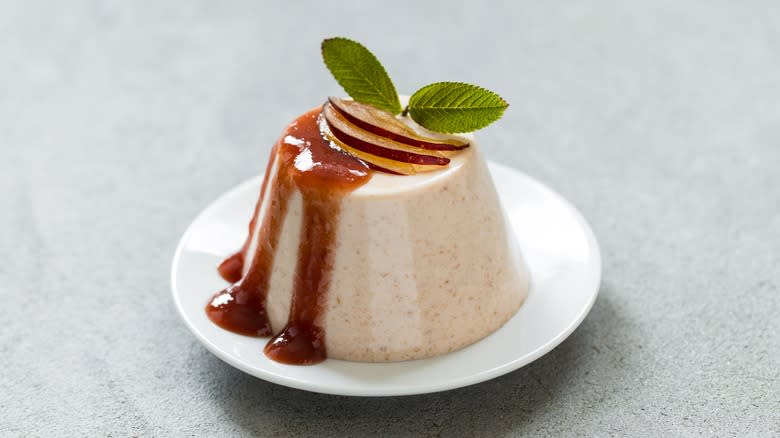
Panna cotta roughly translates to "cooked cream," which perfectly encompasses the nature of the dessert as well as its preparation method. It's an eggless custard made only with thickened cream, sugar, vanilla, and gelatin. It can be flavored with fruit syrup, fruit juice, or coffee, and topped with freshly cut fruits including strawberries and blueberries.
Panna cotta is an old-school Italian dessert and has a very light and fresh texture, so it's the perfect sweet ending to any meal. While panna cotta is similar to flan in terms of its jelly-like appearance, panna cotta is milder in taste and is almost exclusively made and eaten in small servings.
Torrone
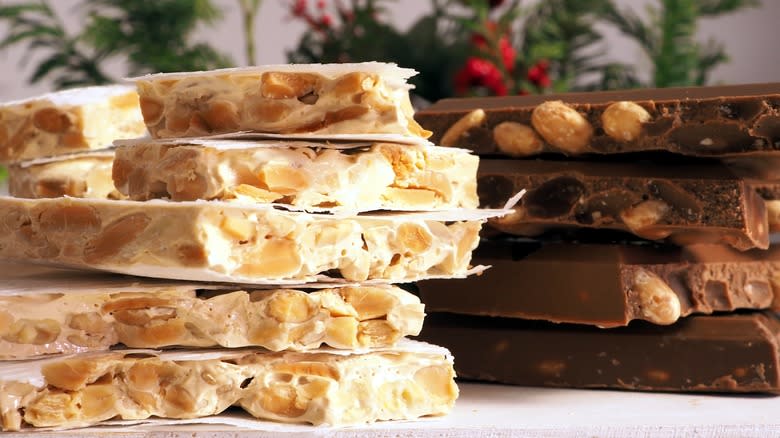
A popular Christmas-time dessert enjoyed by Italians for generations, torrone is a rectangular nougat confection studded with toasted almonds, hazelnuts, or pistachios. It can be either white or brown, hard or chewy, and is naturally quite sweet. It's typically gifted to friends and families during the holidays, when they are ubiquitous in grocery stores, and the flavors and consistency vary by region.
While the dessert is widely consumed across Italy, there are fierce debates over its origins. Some say it was invented by the ancient Romans, while others champion the ancient Samnites. Some argue it isn't even Italian, but Arabic, citing the spread of nougat confection throughout the island of Sicily. However, the most popular theory states that it appeared sometime in the 15th century in northern Italy to celebrate the marriage of Francesco Sforza and Bianca Maria Visconti, the Duke and Duchess of Milan. Regardless of its origins, it isn't Christmas in Italy without a few boxes of torrone.
Panettone
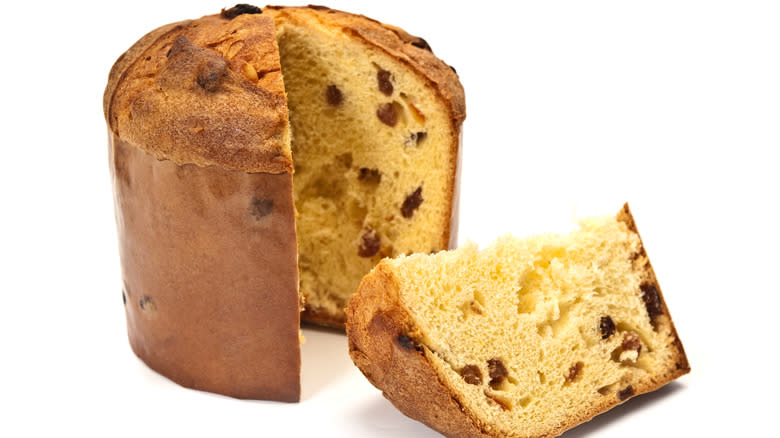
When it comes to Christmas, it is perhaps panettone that reigns supreme as the country's most popular holiday-themed dessert. Panettone is a sweet, pillow-soft, and dome-shaped fruit cake studded with chocolate chunks and candied fruits such as oranges and raisins. It has a light, fluffy texture and is served and eaten like a cake. However, due to its long leavening process, it is technically considered a bread.
The origins of the panettone, although widely debated, sound like a Hallmark holiday movie. One popular legend dates to the 15th century, in which the fruitcake stars at the center of a love story between a medieval baker's daughter and a man named Ughetto, whose family opposed the marriage. To assuage opposition to the union, Ughetto allegedly baked up the ancestor to the panettone that we know and love today. Legend has it that it was so delicious that it not only catapulted the bakery to unparalleled success but also drove Ughetto's family to bestow their blessing upon the young couple.
Pandoro
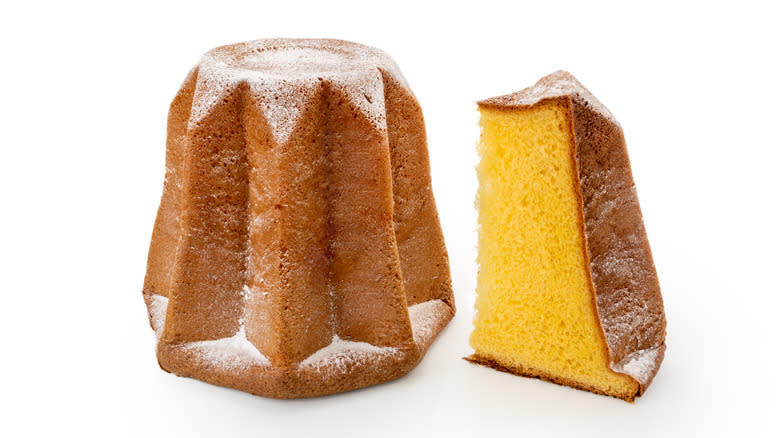
Pandoro is a less flashy, yet equally beloved cousin to panettone. It is still a sweet bread, but it lacks any candied fruits and raisins. Instead, it is doused in a thick layer of powdered sugar. In Italy, pandoro is usually sold plain in a plastic bag that comes with a packet of powdered sugar. It is custom to pour the powdered sugar over the sweet bread in the plastic bag, and then violently shake it, just like a massive snow globe, until the treat has been sufficiently covered.
There's a fierce debate in Italy over whether pandoro or panettone is the best Christmas-time dessert. It's not uncommon to see both served at dinner tables throughout the holidays to appeal to either preference.
Semifreddo
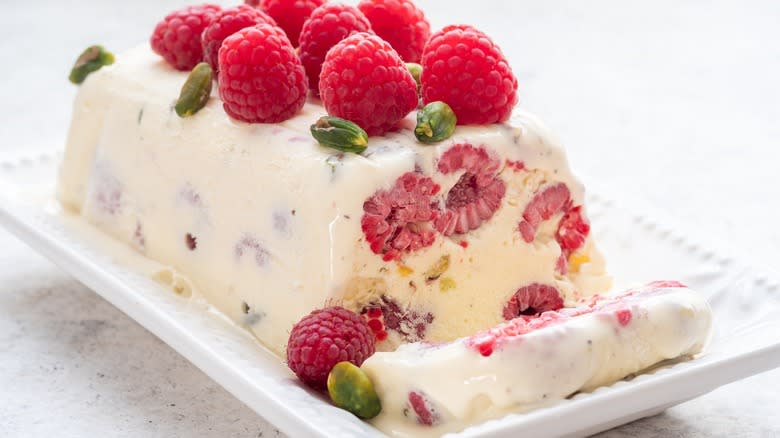
When the scorching months of July and August roll around, an Italian semifreddo is the "semi-frozen" treat you're going to want. This cool dessert, similar in theory to gelato, has the light texture of a fluffy frozen mousse or cake, thanks to being whipped instead of churned. It comes in a variety of mouth-watering flavors, including classics such as hazelnut and strawberry, and is often served with drizzles of fruit syrup and fresh fruits or nuts.
While gelato and semifreddo are within the same family, the former is much denser and heavier while the latter is lighter and an ideal way to cool down on a hot day.
Maritozzi
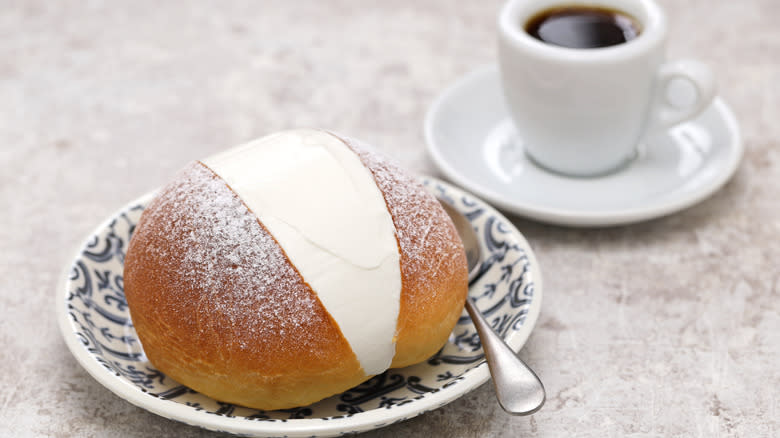
The Eternal City of Rome is not only known for its gelato — and heaping plates of carbonara and amatriciana — but also for the sweet bomb that is maritozzi. These are small, buttery-soft brioche buns, often scented with citrus zest, that are stuffed with an almost absurd amount of fluffy vanilla-infused whipped cream. To top it off, they're sprinkled in a fine layer of powdered sugar.
Because in Italy breakfast is often a cappuccino and a sweet bite, they're usually consumed in the morning. Maritozzi is commonly found in almost every bar or coffee shop in the city, alongside a selection of pastries, cookies, and cornetti, croissants served plain or filled with jam, chocolate, pistachio cream, or vanilla custard.
Seadas
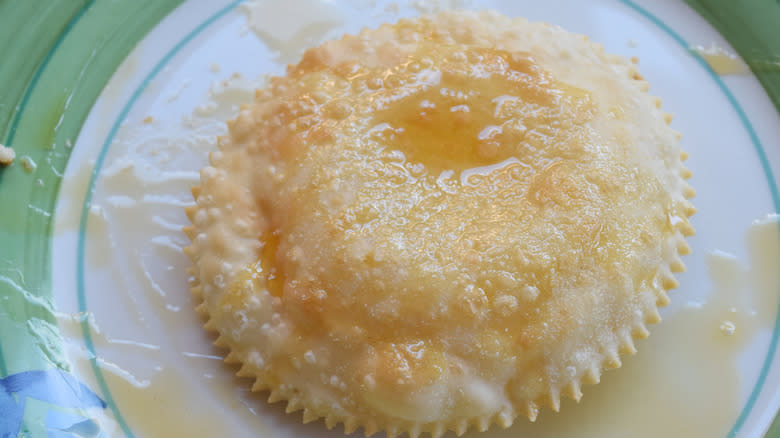
A treat that has mastered the balance between sweet and savory, seadas is the honey-topped cheese dessert you need to know about ahead of your trip to the sunny isle of Sardinia. It is a large, round semolina dumpling that is deep-fried in olive oil and filled with sharp Sardinian pecorino cheese, lemon zest, and a ribbon of rich olive oil. The crispy, tangy dessert is then drizzled with a generous layer of granulated sugar and either local, bittersweet corbezzolo honey or chestnut honey. Each bite is packed with a gooey, earthiness that immediately recalls rustic meals and sun-drenched islands.
Zuppa Inglese
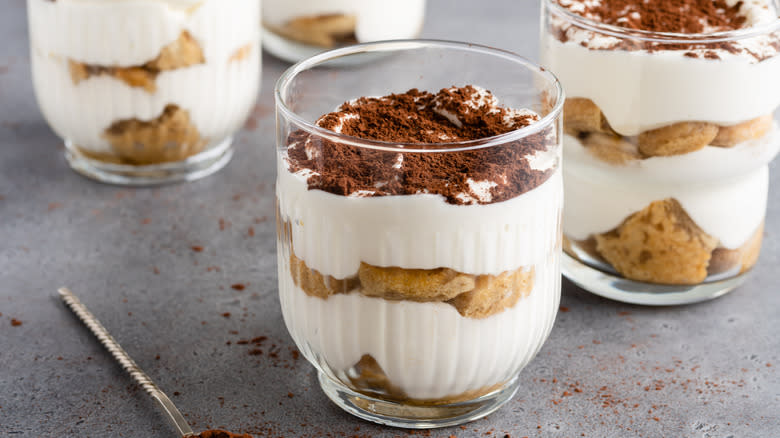
Translating to "English soup," zuppa inglese is sometimes referred to as an Italian version of the modern English trifle. But, the dessert actually has nothing to do with the English and is instead popularly linked to central Italy, primarily the regions of Tuscany and Emilia-Romagna. The treat is most popularly believed to have been around since the 19th century; although, one theory suggests it dates even further back to the 16th century when it was introduced to the Estensi court in the city of Ferrara.
Although it's tricky to pinpoint exactly when and where it was born, a zuppa inglese traditionally consists of several layers of custard sandwich between layers of sponge cake or ladyfingers that have been soaked in a cocoa cream liqueur.
Apple Strudel
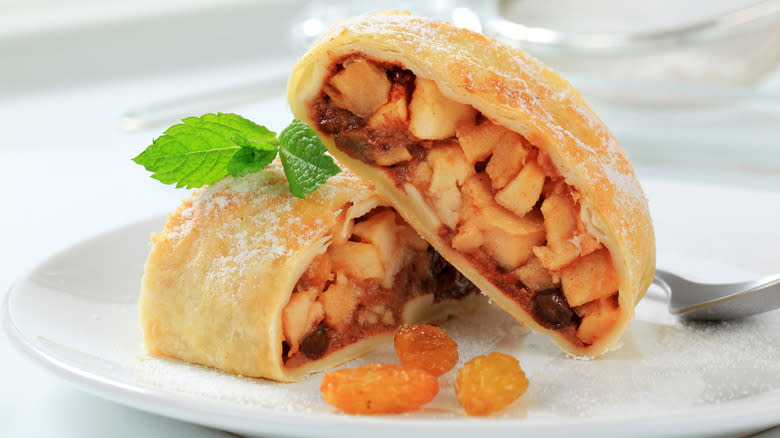
While apple strudel may be more prominently associated with northern European countries, such as Germany and Austria, they're also native to certain northern regions of Italy. In particular, the northern Italian region of Trentino-Alto Adige, also known as South Tyrol. The area straddles the border between Italy and Austria and has intermixed its culture, traditions, and language with its northern neighbor for generations.
It should come as no surprise that even certain foods, such as the famous apple strudel, have been adopted through this constant interaction. In a nutshell, a simple apple strudel is a roll of dough filled to the brim with diced apples, raisins, pine nuts, and a generous amount of cinnamon. It can be served warm and plain with only a sprinkling of powdered sugar or with a dollop of vanilla ice cream to create a delicious, gooey balance between hot and cold.
Amaretti
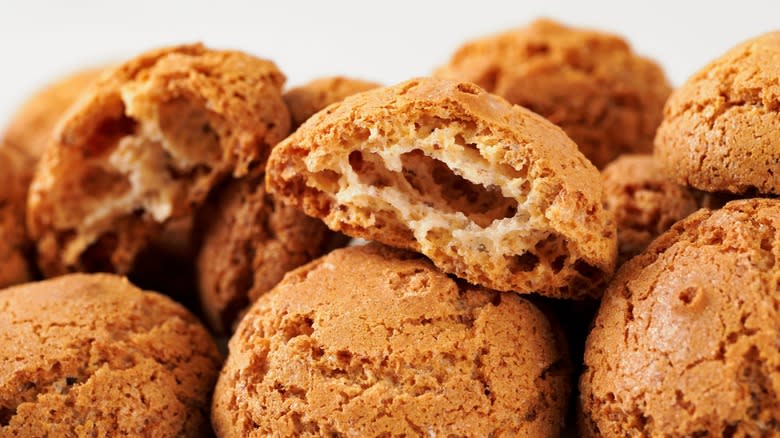
Amaretti is a chewy, sticky, and sweet cookie that can be described as the Italian version of French macarons. The amaretti cookie is only made with egg whites, sugar, almond flour, and amaretto, an almond-flavored liqueur that gives it a slight boozy kick, so it's naturally gluten-free. It's one of the country's most popular kinds of cookies, renowned for its tough, crunchy exterior and soft, chewy interior that makes it very difficult to eat just one. Amaretto, the star of the dessert, is also a widely popular liqueur and is delicious to drink on its own or as a classic amaretto sour cocktail recipe.
Torta Di Mimosa
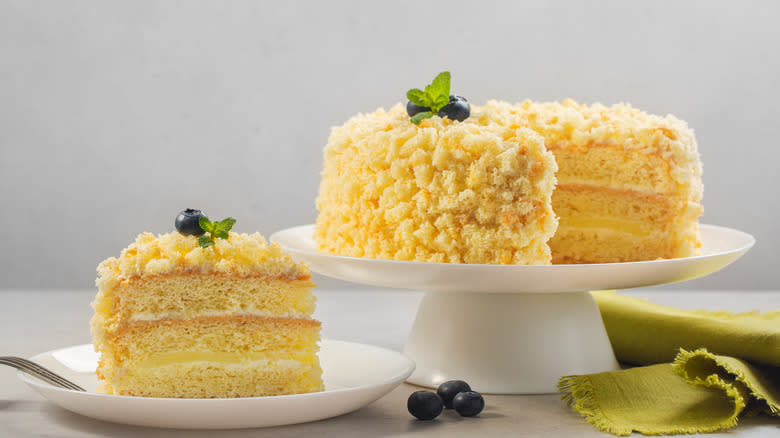
Made from layers of soft sponge cake sandwiched between thick yet light layers of lemon-flavored pastry cream (that's often further infused with citrus liqueur), torta di mimosa is a cake that's used to celebrate women's rights on International Women's Day. The cake is topped with small cubes of sponge cake to mimic a bouquet of mimosa flowers.
These are small, round, and bright yellow flowers that bloom in earnest around the country throughout March and are Italy's unofficial symbol of International Women's Day. It's common to gift daughters, wives, girlfriends, and female friends bouquets of the flower in honor of a tradition initiated by two Italian female activists in 1946. Although the flower may look delicate and fragile, it can thrive in the harshest conditions, just like women.
Rum Babà
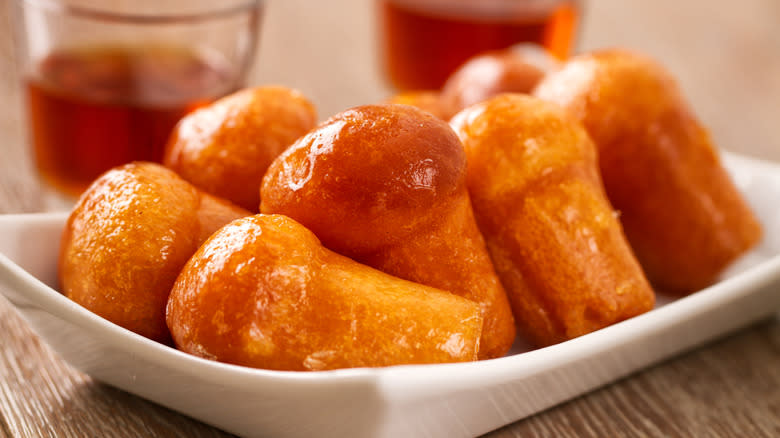
Rum babà is synonymous with the bustling southern city of Naples. This booze-packed mini sponge cake is saturated in a sticky syrup spiked with rum to create a delightfully soggy dessert. Today, it's also a treat you'll commonly find at an old-school NYC Italian bakery, courtesy of the waves of southern Italian immigrants who sought the American dream in the 19th and 20th centuries. In Naples, rum babà is served singularly, or with crema di caffè, a sort of coffee mousse, and a generous amount of whipped cream — a combination that is truly a sweet, booze-packed bomb.
Colomba Di Pasqua
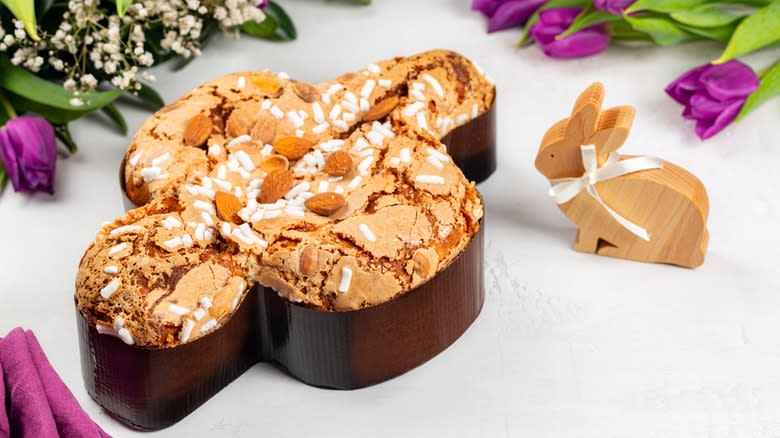
A dessert that makes its appearance every year around Easter, the colomba di pasqua is a sweet bread, similar to panettone, that is roughly baked into the shape of a colomba, a dove. In Christian tradition, the dove is a representation of Easter as it represents peace and love. This legendary Italian Easter cake differs from its Christmas counterpart in that it only contains candied oranges and no raisins. It's also topped with almonds and sugary almond-flavored pearls to give the dessert an overall earthy and nutty taste. Today, the colomba di pasqua is sold in all flavors, including chocolate, pistachio, and cardamom, and is a staple at Easter-time family gatherings.
Torta Sbrisolana
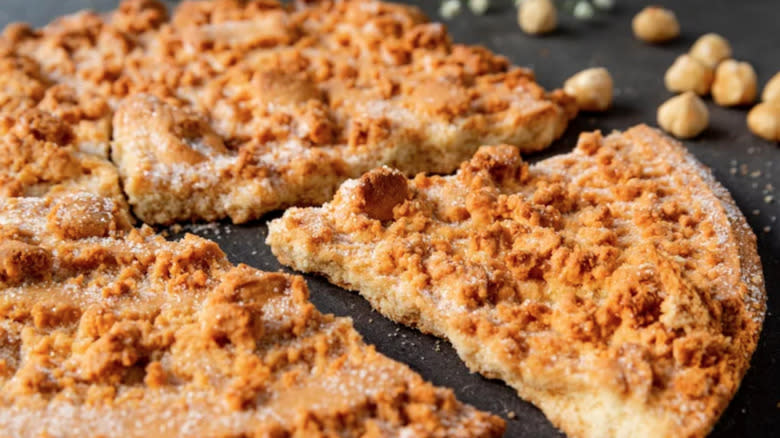
Ultra-thin and with a crumbly texture that's equal parts messy and delicious, torta sbrisolana is a typical dessert of the city of Mantua, located in the northern Lombardy region. The cake has been prepared by farmers in the area since the 16th century, although it was originally only made with lard and corn flour due to a lack of resources. Over the years, more expensive and flavorful ingredients such as eggs, wine, sugar, and spices were added.
While the ingredients may have changed over the centuries, the cake's signature texture has remained a constant. Sbrisolana translates to "big crumbly one" and it gets its distinct, shortbread-like texture due to an almond, polenta, and cornmeal base that's flavored with lemon, wine, and chopped almonds. It's consumed by being broken into uneven pieces, typically by hand, just like a massive cookie.
Panforte Di Siena
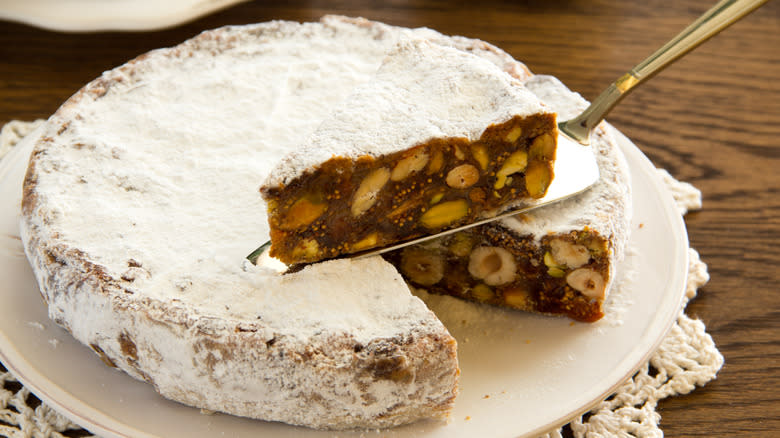
A decadent, dense, and chewy Christmas-time fruitcake hailing from the medieval Tuscan city of Siena, spiced panforte di Siena packs a concentrated serving of spices with every bite. It's typically made with hazelnuts, almonds, candied peels, a heap of spices, honey, butter, and sugar syrup.
The first written reference to panforte dates to 1205, when a nun living in the Abbey of Montecellesi supposedly threw together a medley of spices and honey she found in the pantry to create a dessert that eventually spread in popularity to all the major courts in Italy. Panforte translates to "strong bread," which is perhaps a reference to the treat's intense flavor profile and inspired by the new waves of spices that entered the country from the East in the 13th century.
Zabaglione
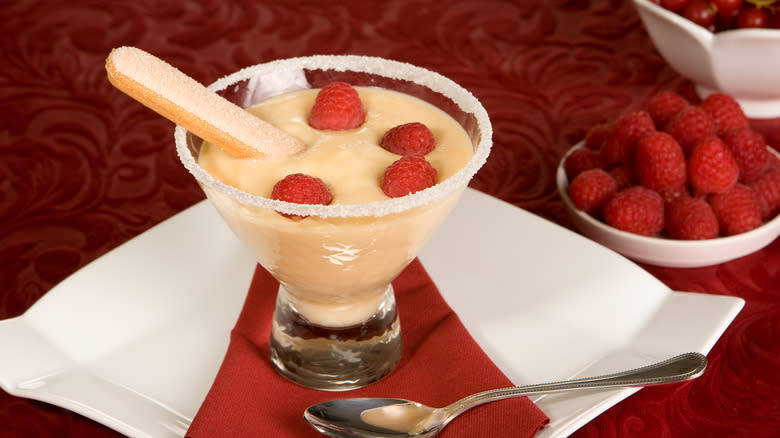
If you're looking for the right way to end a meal, zabaglione is the boozy Italian custard you need to know about. This delicate, foamy custard is made with only three ingredients: egg yolks, sugar, and sweet Marsala wine which lends it a smooth, caramelized taste. Full-bodied with just the right amount of sweetness, zabaglione has a silky texture that's been capturing tastebuds for centuries.
While the dessert's origins are classically debated, it is undoubtedly an Italian creation. It can be definitively traced back to a 1662 cookbook by Bartolomeo Stefano, a chef for the Republic of Venice and the Duchy of Mantua, but may have existed as a much colder version as early as 1533 when a similar egg-based custard was popularly served at the court of Caterina de Medici.
Torta Tenerina
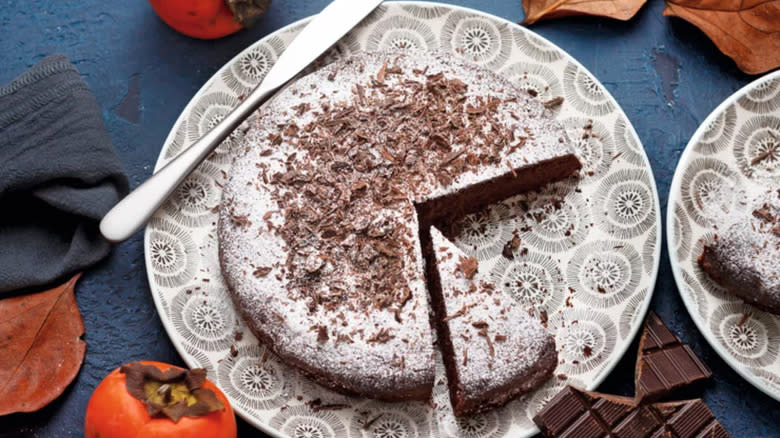
Hailing from the city of Ferrara in the central region of Emilia-Romagna, torta tenerina is the ultra-moist chocolate cake that honors Italian royalty. And while the idea is a sweet one, it's not the first time popular foods have been created and named with royals in mind — the classic pizza margherita, with its ingredients representing the colors of the Italian flag, was supposedly named after the 19th-century Queen Margherita after all.
Tenerina translates to "tender heart," which is both a reference to the moist chocolate interior of the cake and the sweet demeanor of Italy's Queen Elena of Montenegro, who was married to King Victor Emanuel III. The couple, who were the country's last monarchs when the king abdicated in 1946 after World War II, were so beloved throughout Italy that the cake was created in honor of their love.
Affogato
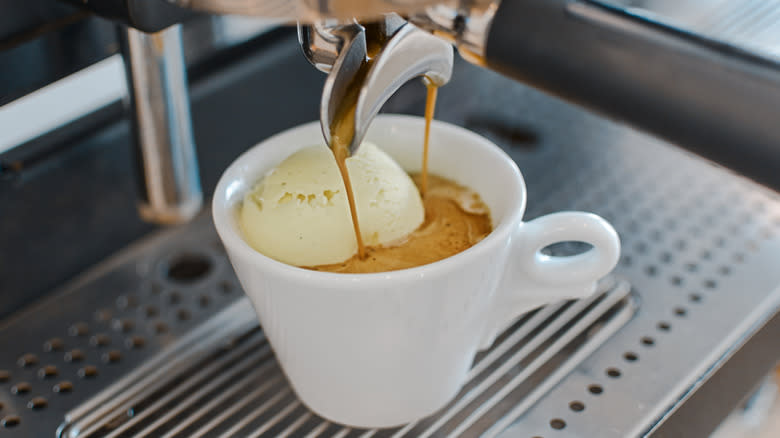
For lovers of both espresso and ice cream, this Italian dessert just might be your new obsession. Translating to "drowned," the treat is usually served in a classic espresso cup in which a healthy dollop of ice cream, traditionally vanilla, is heaped in. A small cavity is then created for freshly brewed espresso to be poured into it. The striking balance between hot and cold creates a melt-in-your-mouth treat that gradually turns into a sort of caffeinated, gooey milkshake as the ice cream melts. Fair warning, it can get messy, and you'll likely be lapping at the cup to get every last drop.
This teat, while ubiquitous across the country, may primarily be associated with Florence — the birthplace of the Renaissance, home to Brunelleschi's Duomo and Michelangelos' David, and famed ice cream parlor, coffee, and pastry shop Vivoli. Affogato is a standout at this cozy establishment, and it's so good that some may say it's worth the trip to the city alone.
Read the original article on Tasting Table.

